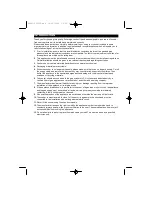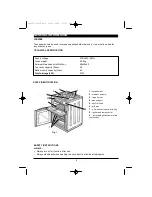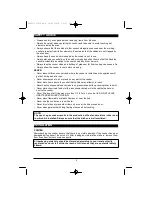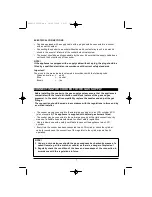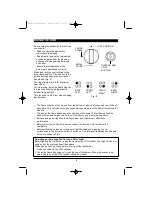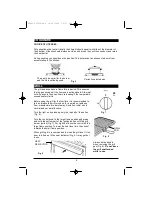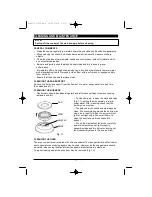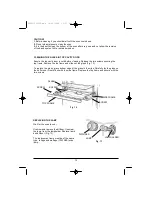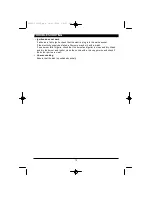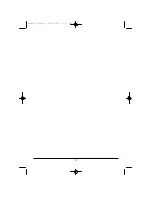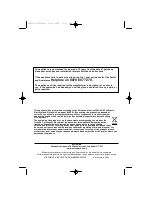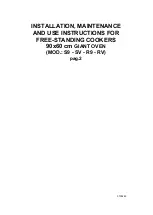
25985-050106.qxp 14/03/2006 10:27 Page 7
ELECTRICAL CONNECTIONS
•
Cookers equipped with a supply cable with a plug should be connected to a socket
with an earth contact.
•
Connecting the cooker to a socket without an earth contact may result in an electric
shock in the event of a failure of the cooker’s electrical system.
•
The socket should be easily accessible by the user. Ensure that the supply cable does
not touch the hot surfaces of the cooker.
NOTE!
If the appliance is equipped with a supply cable without a plug, the plug should be
fitted by a qualified electrician in accordance with current safety standards.
Important!
The wires in the mains lead are coloured in accordance with the following code:
Green and yellow
=
earth
Blue
=
neutral
Brown
=
live
CONNECTING THE COOKER TO THE GAS SUPPLY
Before installing the cooker to the gas supply system, ensure that the appliance is
compatible with the local distribution conditions (nature of the gas and gas
pressure). In the event of incompatibility replace the nozzles and adjust the gas
fittings.
The connection should be made in accordance with the regulations in force and by
a certified installer.
•
The cooker may be connected to the natural gas supply or to an LPG cylinder (LPG
jets not supplied).
The appliance is supplied with natural gas burners fitted.
•
The cooker may be connected to the natural gas supply with a rigid connection or by
means of a flexible hose manufactured to current safety regulations.
•
Use a rubber hose with a safety certificate to connect the appliance to an LPG
cylinder.
•
Every time the cooker has been connected to an LPG cylinder, check the cylinder
valve for soundness, the connection of the regulator to the cylinder as well as its
operation.
NOTE!
1. Under no circumstances should the gas soundness be checked by means of a
naked flame (e.g. with a match or candle) as there is a danger of explosion!
2. Regularly check the condition of the hose and soundness of the connection in
accordance with the regulations in force.
7


